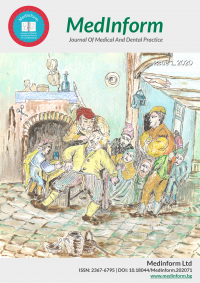Issue One 2020
2020, Vol. 7, issue 1, (January)
Literature Review
Tooth stabilization after dental trauma
Abstract:
Traumatic injuries of teeth can be seen very often and sometimes they can be challenging to treat. Different treatment approaches exist and each of them has specific indication. Dental trauma can be classified into three main categories: damage of hard dental tissues and pulp, lesions of hard dental tissues of pulp and alveolar tissues and lesions of periodontal tissues. In some of these cases, it is necessary to immobilize injured teeth. This is achieved by different means – rigid splints, semi-rigid splints and flexible immobilization splints. The first two groups are commonly used. Rigid splints are: wire splints, arch bar splints, acrylic cap splints, composite splints. Semi-rigid splints are: orthodontic wire and bracket splints, synthetic wire and composite splints, fiber splints, titanium trauma splint (TTS). The rigid splints are often used for a long time and for jawbone fractures to protect against normal tooth mobility. Instead, semi-rigid splints are a little more flexible and allow normal tooth mobility and are often used for a short period of time, such as in cases of avulsion, displacement, and dental fractures. The effects of splinting remain an open field of controversy, but it has been reported that splints used for a long time can cause ankylosis and absorption. Even though, used in an adequate way, they are provide normal healing process and good treatment outcome.
Authors:
Alexandros Zeimpekis; Military dentist at Naval and Veterans Hospital of Athens, BSc, DDS, MD candidate;Ioanna Polichroniadou; Graduate student in Faculty of Dental Medicine, Medical University Sofia;
Dimitar Kosturkov; PhD, Assistant professor, Department of Conservative Dentistry, Faculty of Dental Medicine, Medical University Sofia;

